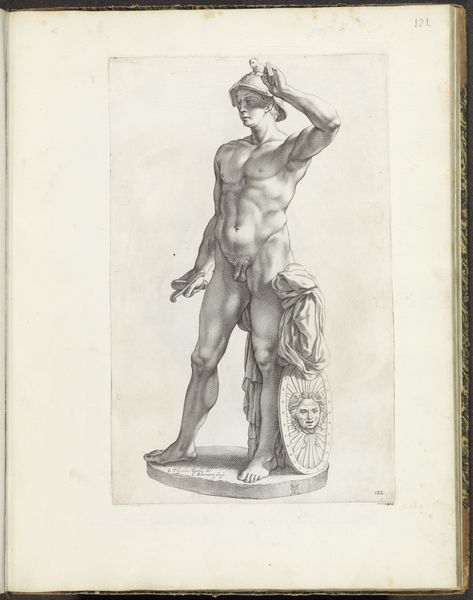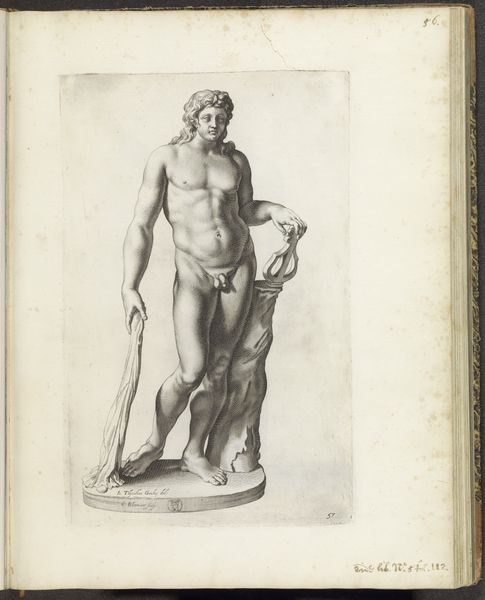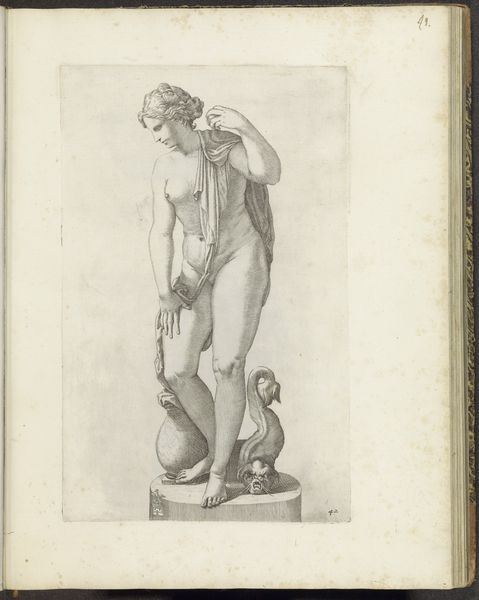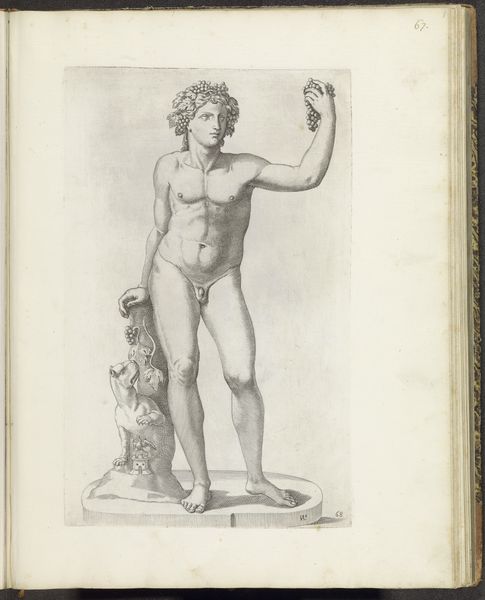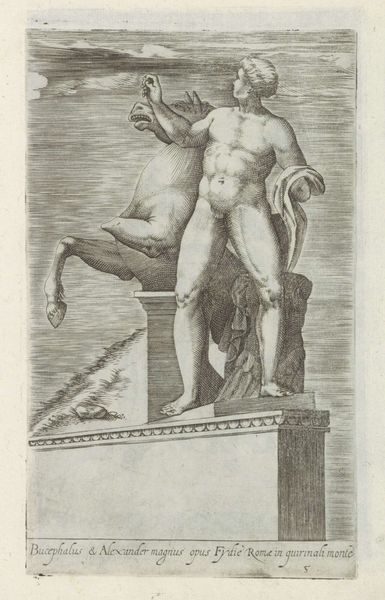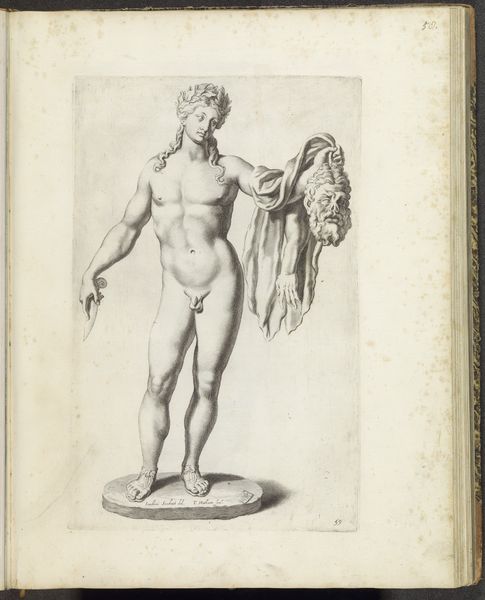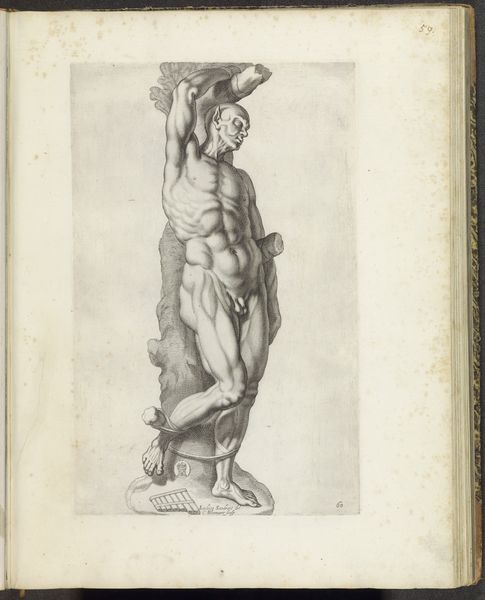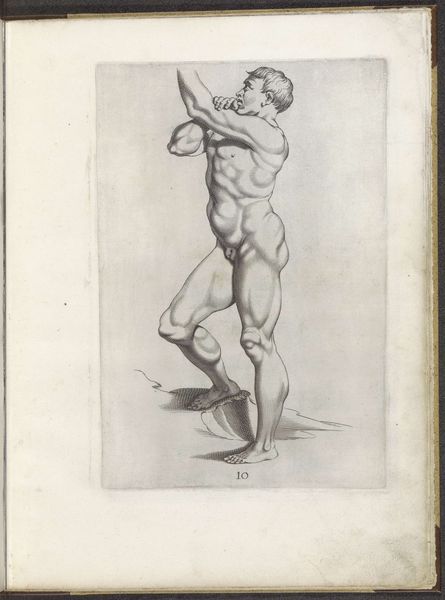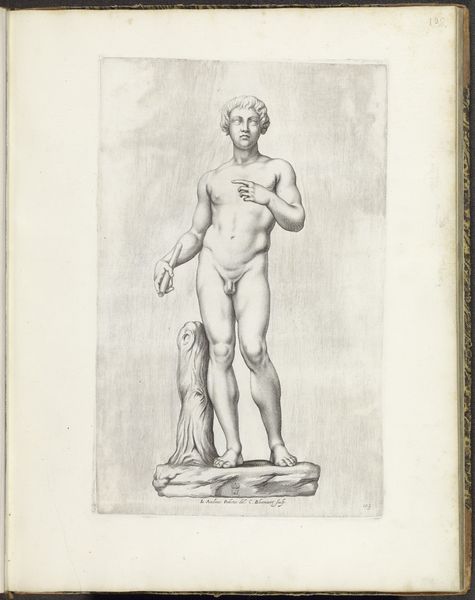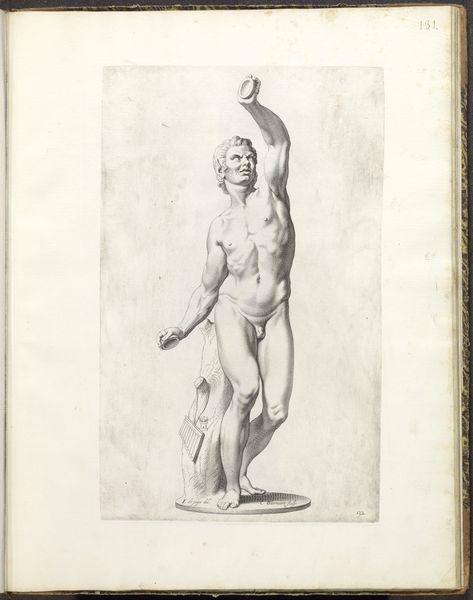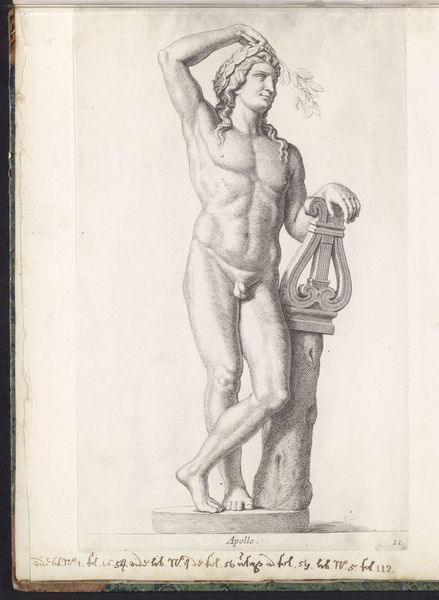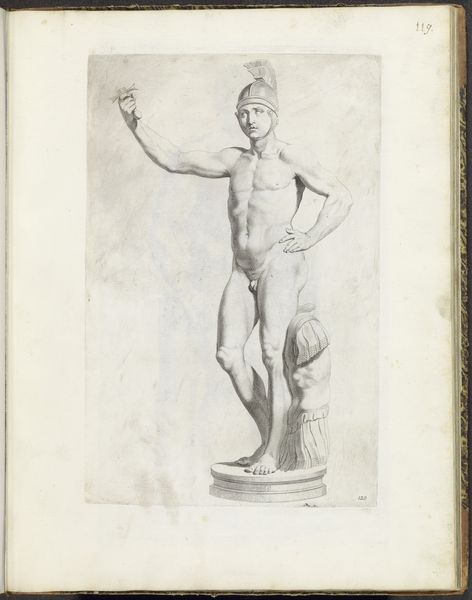
drawing, print, paper, engraving
#
portrait
#
drawing
# print
#
greek-and-roman-art
#
mannerism
#
figuration
#
paper
#
11_renaissance
#
line
#
history-painting
#
nude
#
engraving
Dimensions: height 224 mm, width 144 mm
Copyright: Rijks Museum: Open Domain
Editor: So, this is "Sculptuur van een van de Dioscuren op het Quirinaal te Rome," a print by Giovanni Battista Cavalieri from 1584. The stark lines and contrast create a real sense of classical drama, but something about the subject's posture feels a bit… exaggerated? What do you see in this piece? Curator: I see a deliberate construction of power, filtered through a Mannerist lens. Consider the male nude, the hyper-masculine physique juxtaposed with the positioning. It’s not just about idealized beauty; it's about control. Cavalieri's work operates in a specific historical moment – the late Renaissance, when anxieties around religious and political authority were reaching fever pitch. Editor: Control over what, exactly? And how does that relate to the "Dioscuren"? Curator: Control over narrative, for one. Think about the context: Rome, the papacy, the artistic patronage vying to establish cultural dominance. By depicting this sculpture, Cavalieri engages with a tradition of representing power, both physical and divine. The Dioscuri, Castor and Pollux, were often associated with horsemanship and protection, virtues highly valued by those in power. This piece becomes a commentary on leadership and the very image of a 'leader'. What does it mean to see this kind of male ideal today? Editor: I hadn't really thought of the political angle! It definitely complicates the way I initially perceived it. Curator: Exactly! These images were never neutral; they're actively shaping ideologies. Understanding the historical and social forces behind this idealized figure, forces like patriarchy and class power, lets us decode its messages. Editor: So, even seemingly straightforward depictions carry embedded cultural and political meanings. That’s really helpful. Thank you! Curator: My pleasure! It’s vital to remember art always speaks from and to its time.
Comments
No comments
Be the first to comment and join the conversation on the ultimate creative platform.
